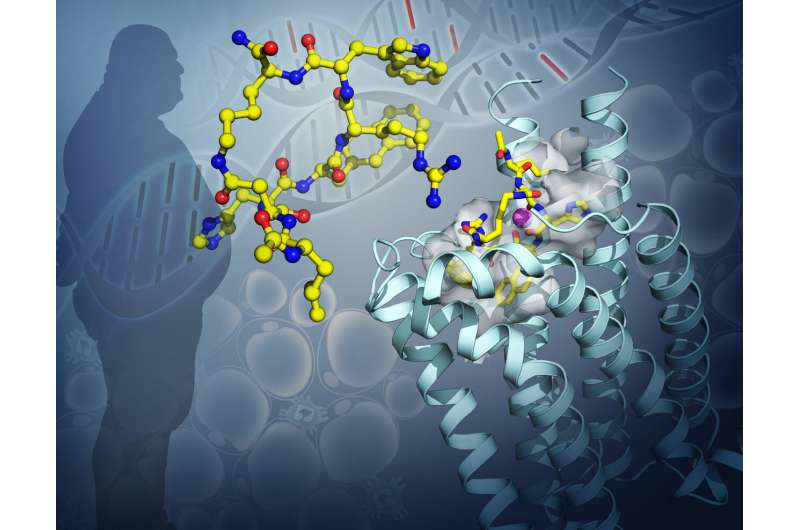Discovery of protein's configuration could lead to more effective anti-obesity treatments

Researchers have unveiled the precise shape of a key player in human metabolism, which could open the door to better treatments for obesity and other metabolic disorders.
The research, scheduled to publish April 24 in the journal Science, centered on a protein in the brain called the melanocortin 4 receptor, or MC4R. This receptor plays a crucial role in regulating the body's energy balance by controlling how much energy is stored as fat.
Mutations in the gene that encodes the MC4R protein are the most common genetic cause of early-onset obesity, affecting approximately 1 in every 1,500 people.
Raymond Stevens, director of the Bridge Institute in the University of Southern California Michelson Center for Convergent Bioscience and founding director of the iHuman Institute at ShanghaiTech University, was interested in the MC4R as part of a larger effort to elucidate the structures of a class of proteins called G protein-coupled receptors, of which MC4R is a member.
As Stevens and his team began to tackle the MC4R structure, they turned to Roger Cone and his colleagues at the University of Michigan Life Sciences Institute.
Scientists in the Cone lab discovered the MC4R and have been studying its biology and pharmacology for more than 25 years. In that time, at least four drugs have been developed to target melanocortin receptors in humans. One of these drugs, setmelanotide, acts at the MC4R to treat rare forms of syndromic obesity. But it is not potent enough to treat more common forms of obesity—such as dietary obesity—explained Cone, who was a senior author of the study.
Working across the three institutions, researchers Yu Jing and Luis Gimenez led the team in determining the structure of the MC4R—and uncovered some unexpected characteristics of the protein that shed new light on how it binds to and interacts with other molecules.
For example, they found a calcium ion binding to both the MC4R and to the primary molecule that the receptor binds. This instance of the bound calcium ion was a first for Stevens and his group, who have determined the structures of many members of this large class of proteins.
"At first it seemed like more of a scientific curiosity. But then further experiments revealed that the calcium is actually required for the function of the receptor," said Stevens, who also was a senior author of the study. "Imagine a lock and key situation; in this case, we found that there's a large key and a small key, and we need both of them to unlock the receptor."
Lex Van Der Ploeg, former chief scientific officer of Rhythm Pharmaceuticals, the company that developed setmelanotide, believes the findings open a new path to structure-based design of agonists and antagonists for the melanocortin receptor family.
"These discoveries can enable the development of melanocortin receptor targeted pharmaceuticals for diverse therapeutic applications," said Van Der Ploeg, who did not participate in this study.
Cone and Stevens highlight the findings as an example of the importance and power of international collaboration.
"We were able to contribute our knowledge of the MC4R to help further the structural biology studies," said Cone, who serves as director of the LSI and a professor of molecular and integrative physiology at the U-M Medical School. "And key structural findings from the USC and ShanghaiTech researchers are helping us answer more questions about how this receptor functions in human metabolism."
More information: "Determination of the melanocortin-4 receptor structure identifies Ca2+ as a cofactor for ligand binding" Science (2020). science.sciencemag.org/cgi/doi … 1126/science.aaz8995
Journal information: Science
Provided by University of Michigan

















